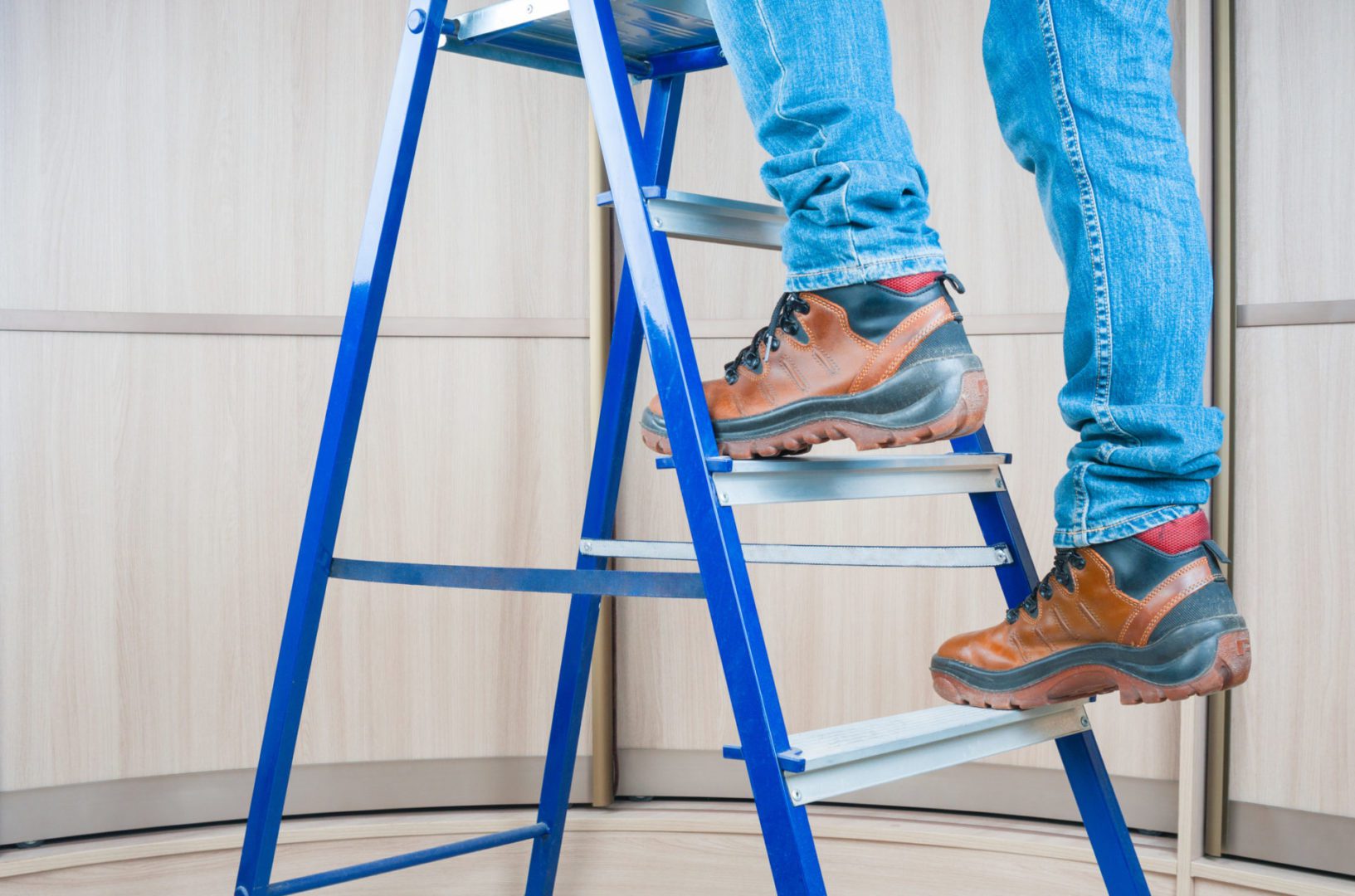Bad-Luck Ladders: Ladder Accidents and How to Prevent them

Most people are familiar with the saying that walking under a ladder is bad luck. What they might not know is that there is some truth to that old superstition. While origins of this myth vary depending on the culture, the most accepted version is that ladders were thought to resemble gallows in medieval times. Therefore, if you walked under a ladder, you would be destined for the gallows yourself. While walking under a ladder will not magically infuse you with some sort of supernatural curse, the improper use of a ladder does pose a significant risk to your health and safety. An accidental bump of the ladder could throw whoever or whatever on it off balance. This would result in the person or item falling, causing injury to all involved. The ladder could also fall and crash into something or someone and cause significant damage. According to OSHA (Occupational Safety and Health Administration), falls from ladders — step, straight, combination, and extension — account for about 20% of all fatal and lost workday injuries. Most ladder-related injuries can be prevented by following the proper safety precautions. To reduce your risk of injury and even death, first make sure your ladder meets these OSHA-approved requirements:
- Your ladder must be able to support its maximum intended load.
- Your ladder should have parallel rungs supported by a rail on each side. The rungs must be spaced equally and built in a way that would prevent foot slippage. Portable single-rail ladders are unsafe and should not be used.
- Your ladder is the correct one for the job. For example, never use a metal ladder for electrical work or near uninsulated electrical conductors.
- Your ladder has been inspected before use for any defects. Immediately replace any broken or defective ladders.
- Do not use a ladder when tired, dizzy, or ill.
- Do not use a ladder during windy or stormy weather.
- Make sure your shoes are clean and have a good tread.
- Your ladder must be used only on firm ground. Do not place your ladder on slick or uneven surfaces.
- Do not allow more than one person to operate a ladder at the same time unless it is built to accommodate numerous climbers.
- Do not place a ladder near doors or entryways.
- Always carefully review the safety information on the ladder prior to use.